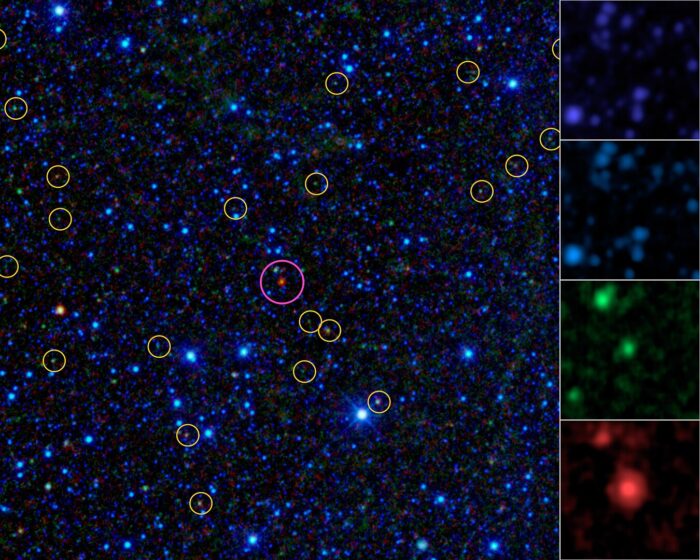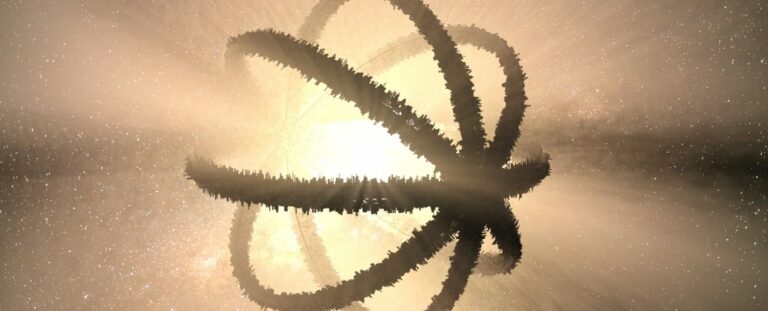Scientists suggest that there may be an alternative explanation for the enigmatic Dyson Spheres.
Recently, there was a new sighting that added thrill to the whole search of alien life. Seven stars have now turned out to be possible abodes for a higher level of intelligent life as they radiate a large portion of the electromagnetic energy in the infrared range. Such an occurrence may best be explained by Dyson Spheres; large constructions created by space-faring civilizations to capture the energy output of their corresponding stars.
However, there is a possibility that a recent paper has provided an alternative explanation, which is not as exciting as this one. They say that the infrared radiation could be produced by dust obscured galaxies and not complex extraterrestrial technology.
In the search for worlds with life out there, researchers use the following techniques one of which is looking for big structures in space. Dyson Sphere is an idea enunciated by Freeman Dyson back in 1960, where advanced civilizations alter stars constructing power collectors and habitats. Eventually, these structures would probably extend out to the size of the entire star, which could be inferred by observing their ‘aftermath,’ including phenomena such as an increased amount of thermal emission in the infrared range.
These seven M type stars were identified using Project Hephaistos, among 5 million stars observed by Gaia astrometric satellite. As a result of the mapping functionality of Gaia, this project has been vital in the exploration of stars in Milky Way and has positively impacted numerous outcomes of different research operations.
To selectively target the stars showing the characteristic infrared excess, the study also involved using the data from the Two Micron All Sky Survey (2MASS) and the Wide Field Infrared Survey Explorer (WISE). These stunning discoveries have made new possibilities for the search for extraterrestrial intelligence ongoing.

In the recent publication authored by Tongtian Ren and their team, the authors specifically discuss the findings made in the process of the study in detail and also discuss on the hypothetical characteristics of the candidate spheres. First, we crossmatched the VLASS data with several other radio surveys of the sky performed in the last few years.
Their survey entailed covering for radio sources within a 10 arc second around the Gaia positions of the candidates. It is also important for one to understand that when fully illuminated, the diameter of the Moon measures 1,860 arc second.
Consequently, radio sources were found for three out of four candidates, namely, candidates A, B, and G. The positional uncertainties of these sources were found to be between 4. 9, 0. An accuracy of at least 5 arc seconds in azimuth and 4 arc seconds in elevation of the radar is required. It is also important to note that candidate G was detected in many different radio searches. According to their work, the team opines that these arrangements are not Dyson Spheres but may be connected to some other extragalactic event. The current assumption is that of a distant galaxy behind the dust. )
This dust when present would alter the distribution of Infrared energy in the two objects spectra. Likewise, candidate B is also thought to be an actual distant galaxy although this one is slightly closer to a M type dwarf star.
Candidate G, analogous to candidates A and B, reveals a spectrum characteristic of a radio loud active galactic nuclei with superluminal jets protruding. It can be presumed that these galaxies are actually quasars of great distance and that they radiate large amounts of energy. Nevertheless, scattering by hot dust envelopes makes it difficult to observe majority of the radiation, apart from infrared.
What about the four other candidates?As of now, no radio counterpart has been found. Despite this, it does not negate the hot, dust-obscured galaxy model, however, it highlights the importance of using higher resolution radio surveys in determining the nature of these objects.
Still, it seems to be quite reasonable to assume that such candidates actually belong to technological circles around distant stars. Although personally I would be interested in this notion, at the moment it cannot be backed with substantial evidence.
Do not forget to share your opinion with us to provide you with the best posts !




0 Comments